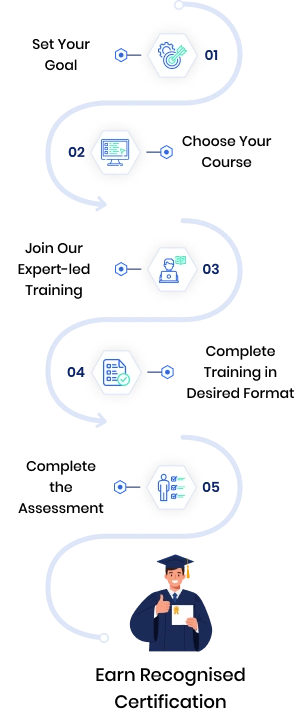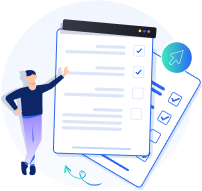Course Overview O v e r v i e w
- Course Overview
- Course Outline
- What’s Included
- What You’ll Learn
- Exam Details
SAFe® Agile Software Engineering Training Overview
The SAFe® Agile Software Engineering Training Course is designed for technical team members who want to enhance their software development practices within a SAFe® enterprise. It focuses on modern Agile engineering techniques such as Test-Driven Development (TDD), Behaviour-Driven Development (BDD), and Continuous Integration, enabling teams to build high-quality, scalable software collaboratively.
Formal training provides a structured approach to mastering essential engineering practices that improve code quality, team collaboration, and delivery speed. Certified professionals gain the confidence to apply Lean-Agile principles in real-world development environments, making them valuable contributors to high-performing Agile Release Trains (ARTs).
Training Deals offers expert-led sessions, practical exercises, and tailored learning resources that bridge theory with hands-on application. With a focus on real-world scenarios and post-training support, Training Deals ensures that learners not only pass the certification but also apply Agile engineering practices effectively in their roles.

SAFe® Agile Software Engineering Training Outline
Module 1: Introduction to Agile Software Engineering
- Define Agile Software Engineering
- Form Your Agile Software Engineering Team
Module 2: Connecting Principles and Practices to Built-in Quality
- Connecting Principles to Practices
- XP Practices
- Explore Key Definitions
- Built-in Quality
- Tradeoff
Module 3: Accelerating Flow
- Flow of Value
- Validate the Benefit Hypothesis
Module 4: Applying Intentional Architecture
- Apply Systems Thinking
- Role of Agile Architecture in Supporting Lean-Agile Development
- Architect and Design for Testability
Module 5: Thinking Test-First
- Shift Testing Left
- Agile Testing Matrix
- Role of Non-functional Requirements
- Build Quality Throughout the Pipeline
Module 6: Discovering Story Details
- Examine Story Criteria
- Split Stories to Reduce the Minimum Marketable Feature
- Create Workflow and Storymaps
- Identify assumption and Risk
Module 7: Creating a Shared Understanding with Behaviour-Driven Development (BDD)
- Apply Behaviour-Driven Development for Shared Understanding
- Specify Desired Behaviour for Domain Terms
- Behaviour for Business Rules and Algorithms with Test
- Test the User Interface
- Apply Test Doubles to Behaviour-Driven Development
- Identify Existing Tests Impacted by New Requirements
Module 8: Communicating with Models
- Use of Models
- Static Models
- Class-Responsibility-Collaboration Relationship
- Dynamic Models
- State Models
Module 9: Building Systems with Code Quality
- Code Qualities
- Cohesion and Coupling
- Other Code Qualities
- Benefits of Collective Ownership
Module 10: Building Systems with Design Quality
- Design Tradeoffs
- Interface-Oriented Design
- Apply Quality Decomposition Practices
- Apply Differentiation and Synthesis
- Apply Software Design Patterns
Module 11: Implementing Quality
- Design with Test
- Apply Test-Driven Development Practices
- Implement Test Doubles and Test Data
- Refactor to Support New Behaviour of the Code
- Practice Emergent Design

What’s included in this SAFe® Agile Software Engineering Training?
- Expert-led Training Sessions by Certified Instructors
- SAFe ® Agile Software Engineer Exam
- Digital Delegate Pack
What You’ll Learn in this Course
This course guides you from understanding the fundamentals of Agile Software Engineering within SAFe® to applying advanced practices in large-scale development environments. Each stage of the journey equips you with practical skills and confidence to engineer high-quality software in alignment with Lean-Agile principles.
- Learn Agile Software Engineering principles within the SAFe® framework
- Learn to structure Agile teams with defined role clarity
- Learn to manage risks, quality, and changing requirements effectively
- Learn to apply SAFe® practices across enterprise-scale development
- Learn to monitor progress through iterations and synchronised planning
- Learn to deliver software aligned with business and customer value

SAFe ® Agile Software Engineer Exam Information
The SAFe® Agile Software Engineer exam tests your ability to apply Agile software engineering practices in a SAFe® environment. It certifies your readiness to contribute to high-quality, Lean-Agile software development at scale.
Question Type: Multiple Choice, Single Select
Total Questions: 20
Total Marks: 20 Marks
Pass Marks: 90%, or 18/20 Marks
Duration: 45 Minutes
Type: Open book, with access to the workbook and learning plan

Our Upcoming Batches
Mon 2 Feb 2026 - Wed 4 Feb 2026
Duration: 3 Days
Mon 11 May 2026 - Wed 13 May 2026
Duration: 3 Days
Mon 10 Aug 2026 - Wed 12 Aug 2026
Duration: 3 Days
Mon 16 Nov 2026 - Wed 18 Nov 2026
Duration: 3 Days
Mon 29 Dec 2025 - Wed 31 Dec 2025
Duration: 3 Days Buxton
Fri 2 Jan 2026 - Sun 4 Jan 2026
Duration: 3 Days Buxton
Mon 13 Apr 2026 - Wed 15 Apr 2026
Duration: 3 Days Buxton
Mon 11 May 2026 - Wed 13 May 2026
Duration: 3 Days Buxton
Request More Information

Corporate Training
Elevate your workforce with expert-led corporate training that enhances skills, boosts productivity, and aligns teams with your business goals.

Individuals Training
Unlock personal growth and sharpen professional skills with tailored training designed to build your confidence and career success.
Your Path to Professional Recognition
Our path is designed to guide you through each stage with clarity, support and practical learning, helping you achieve your goals with confidence.

Step Forward with Globally Recognised Certification
A recognised certification is more than a credential. It’s proof of your commitment to professional excellence, providing you with the credibility, confidence, and global reach to advance your career in exciting new directions.
Globally Certified Professionals Over Time
Career Growth
81%Certified professionals reported receiving a promotion after earning their certification.
Global Opportunities
89%Certified professionals experienced access to new career opportunities, including leadership roles and global positions.
Not able to find what you are looking for
Our experts will guide you to the right course from thousands worldwide: tailored to your goals.
Frequently Asked Questions
It teaches Agile engineering practices within the Scaled Agile Framework to build high-quality, scalable software.
Software developers, testers, Agile team members, and technical leads working in SAFe® environments.
Basic understanding of Agile principles and experience in software development is recommended.
SAFe® includes four core configurations: Essential SAFe, Large Solution SAFe, Portfolio SAFe, and Full SAFe. Each configuration supports different levels of organisational scale and complexity.
The exam has 20 multiple-choice questions, with a 90% pass mark (18/20), and a 45-minute duration.
What Our Customers Say About Us
 Matthew Sullivan
HR Business Partner
Matthew Sullivan
HR Business Partner
Our HR team registered for the Change Management Foundation & Practitioner Training Course, and it couldn’t have been more valuable. The team gained practical frameworks to guide employees smoothly through transitions with confidence.
 Olivia Barrett
Operations Manager
Olivia Barrett
Operations Manager
Our operations staff completed the Lean Six Sigma Green Belt Training Course, and it has been transformative. We can now identify inefficiencies quickly, and the tools we learned are already improving performance across the team.
 Benjamin Foster
Product Manager
Benjamin Foster
Product Manager
Our product team took part in the Agile Project Management Foundation & Practitioner (AgilePM®) Training Course, and the difference is remarkable. We’re now more adaptive, collaborative, and efficient in managing change.
 Lucy Harper
IT Support Lead
Lucy Harper
IT Support Lead
Our IT support unit attended the ITIL® 4 Foundation Training Course, and the results have been impressive. Processes are smoother, collaboration has improved, and the team finally speaks a common language of service management.
 Edward Clarke
Programme Manager
Edward Clarke
Programme Manager
We joined the PMP® Certification Training Course as a leadership group, and it was outstanding. The trainer made every concept practical, and the exam preparation resources helped the whole team feel ready to tackle complex projects.
 Amelia Rhodes
Project Officer
Amelia Rhodes
Project Officer
Our project office completed the PRINCE2® Foundation & Practitioner Training Course, and it has brought real clarity to how we manage projects. The trainer’s examples were excellent, and the team now follows a structured approach with confidence.

























